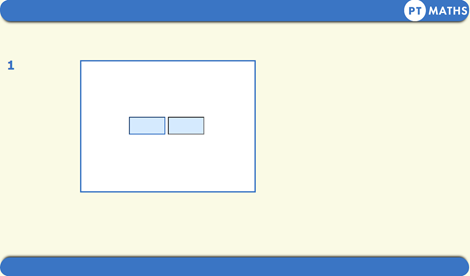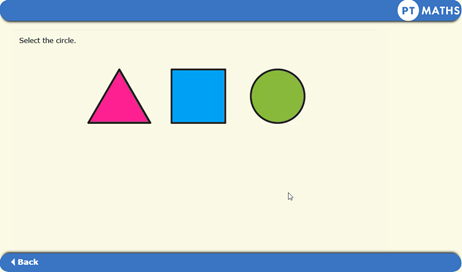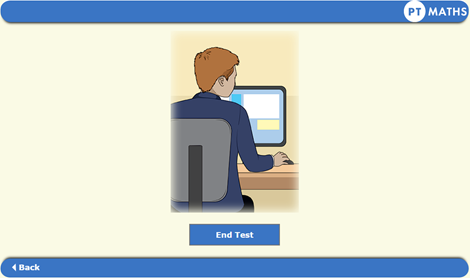What happens on the day?
Paper testing
Time needed for testing (paper tests)
- The time needed will depend on the level of the test. PTM tests 5-7 have no time limit, but most students can demonstrate their abilities within 35-40minutes. PTM 8-14 are in two parts: Mental Maths has timed questions taking about 15 minutes in total, and Applying & Understanding Maths has no time limit but usually takes 40-60 minutes.
- Allow time for a break between the two parts. You may wish to split the test across two days. Consider administering the Applying and Understanding Maths test first, so that students are unable to look at the questions during the Mental Maths test.
General arrangements for testing
- Make sure that the testing room is comfortable.
- Place a ‘Testing – Do Not Disturb’ sign on the door.
- Try to prevent any interruption of the testing session by visitors or announcements.
Material needed for testing (paper test)
- Each student will need a Pupil/Student Booklet, a ruler and a pencil.
- The use of a calculator is not permitted in PTM levels 7 - 11T. The use of a calculator is permitted in the Applying and Understanding Maths section of PTM 12 - 14, but not in the Mental Maths section.
- You will need these instructions and your own copy of the Pupil/Student Booklet for the testing session.
- Prepare a quiet activity for students who finish early.
Getting ready for testing
- Explain to the students why the test is being given, as well as describing the conditions under which testing generally takes place. You might wish to add some words of reassurance, for example the purpose of the test is ‘to help find out what you can do and where you need more help’ or ‘it will help your teacher next year to know what you can do’.
- Ask pupils to fill in the information required on the front cover, giving help if required. Alternatively, the school can complete these details.
- Tell the students the following, in your own words:
- You will read all instructions and explain what is involved.
- They will be allowed as much time as they need to complete each section.
- They should write clearly. If they make a mistake, they should rub/cross it out neatly and write the new answer clearly.
- If there is anything they don’t understand, they should ask. (Additional information on procedure may be given, but no other help should be provided by you.)
Mental Maths
- Make sure that the audio recording is ready to play. Play the first sentence of the recording (‘Welcome to the Progress Test in Maths 8 Mental Maths test!’) to check that it is loud enough for all students. Resume playing the audio file, and then pause it at the end of the instructions (after the instruction ‘You must not talk or ask questions once the test has started. If you have any questions, please ask them now’), so that students have the opportunity to ask any questions.
- When you are ready to start the test, continue playing the audio recording and the test will begin.
- No calculators or rough paper for working out answers are allowed for this part of the test.
Applying and Understanding Maths
After pupils have finished the Mental Maths section, they should complete the Applying and Understanding Maths section on their own. Some questions will be read aloud in the lower levels of PTM.
During the test
- Check the students are progressing appropriately and are staying on task.
- Encourage students to check their work carefully when they have finished.
At the end of the test
At the end of the test, please collect the Pupil Booklets. Fill in the Batch Header Sheet (BHS) and data file, and prepare the batch to be sent to GL’s Scoring & Reporting division.
Please see the crib sheet (paper test) for invigilators.
Digital testing
Please read the information in the ‘Getting Started’ section of Testwise help.
Time needed for testing (digital test)
The time needed will depend on the level of the test. PTM 7 has no time limit, but most students can demonstrate their abilities within 35 minutes. PTM 8-14 are in two parts: Mental Maths has timed questions taking about 15 minutes in total, and Applying & Understanding Maths has no time limit but usually takes 40-60 minutes. PTM 15 has no time limit but usually takes about 60 minutes.
Allow time for a break between the two parts. You may wish to split the test across two days, although the two sections should be taken within a week
Material needed for testing (digital test)
- A copy of the administration instructions.
- A computer or laptop, fully charged and in good working order, headphones and a mouse, for each student.
- For the second part of the test, Applying and Understanding Maths, each student should be given a pencil and a sheet of rough paper for workings. This should be handed back to the teacher at the end of the test and thrown away. Students should not use rough paper for workings during the Mental Maths part of the test.
- The use of a calculator is not permitted in PTM levels 7 - 11T. The use of a calculator is permitted in the Applying and Understanding Maths section of PTM levels 12 - 15, but not in the Mental Maths section. Where students are allowed to use calculators, they will be provided with one within the test, on screen.
General arrangements for testing
- Make sure the testing room is comfortable.
- Place a ‘Testing – Do Not Disturb’ sign on the door.
- Try to prevent any interruptions of the testing session by visitors or announcements.
- Set up the computers in advance.
Administering the digital test
The test must be administered in a formal test environment. Students should be made aware that they are taking a test and that the usual expectations of behaviour and constraints of a test session will be in place.
Introduce the test with the following information, adapted as required:
‘Today you are going to take a Maths test. All instructions are provided and you should read and listen to them carefully to make sure you understand what you have to do. There will be some example questions at the beginning, to show you how to answer different types of questions in the test. You can repeat these examples, if you need to.
If you have any questions during the test, you should put up your hand and wait for someone to come to you. [You should not help with any test questions.]
First, we will try some practice questions, so listen carefully. Stop when you have finished the practice questions.
Click on the ‘Take Now’ button.’
Starting the test
At the beginning of the Mental Maths test there are some simple practice questions. They are separated into three sections. Each section gives students either 5, 10 or 15 seconds to answer before the question is locked and the next one appears on screen. Here is the first example:

At the beginning of the main test, there is also a series of example questions to show students how to answer the different types of questions. Here is the first example question:

Students can work through the examples at their own pace and go back to see again what they need to do. When testing younger students (for example those taking PTM 7 and PTM 8), you may want to oversee this part of the process.
During the test
- Students use the ‘Next’ and ‘Back’ buttons to navigate through the questions.
- Students must work in silence.
- Teachers should walk around during the test to check that students are progressing appropriately and that they are not looking at each other’s work or talking.
- Teachers should also check that the students have not rushed through any part of the test without attempting to answer each question.
Ending the test
At the end of the test, the following screen will appear:

Once students have ended the test, their results will be saved and stored automatically. Students must not try to exit the test or close the screen by clicking on the cross at the top right-hand corner as this will cause results to be lost.
Please also see the crib sheet for digital test for invigilators.
Troubleshooting and exceptional circumstances
Check the Testwise technical support for technical support.
If an unexpected incident interrupts the test session, record the details carefully. If pupils subsequently achieve lower than expected scores, the incident can be taken into account as a possible explanation.

